SUVs are built for versatility — they haul families, cargo, camping gear, and sometimes even trailers. But for an SUV to truly be dependable, it needs a rock-solid engine that can handle everything from highway cruising to weekend getaways to off-road adventures. Reliability in this segment means more than just avoiding breakdowns; it means confidence in every season and at every mileage milestone.
In this deep dive, we spotlight the most reliable SUV engines that have earned reputations for longevity and toughness. These engines are known for surviving hundreds of thousands of miles — often in challenging conditions — without major mechanical failure. Brands like Honda, Toyota, and Mazda consistently deliver SUV engines that are not only efficient but mechanically sound, year after year.
Contents
- 1 Toyota 4.0L V6 (1GR-FE)
- 2 Toyota/Lexus 3.5L V6 (2GR-FKS)
- 3 Honda 2.4L I4 (K24 Series)
- 4 Honda 1.5L Turbo I4 (L15B7)
- 5 Mazda 2.5L I4 (Skyactiv-G)
- 6 Lexus/Toyota 4.6L V8 (1UR-FE)
- 7 GM 5.3L V8 (Vortec / EcoTec3)
- 8 Ford 5.0L V8 (Coyote Engine)
- 9 Toyota 5.7L V8 (3UR-FE)
- 10 Mercedes-Benz 3.0L I6 & V6 Turbodiesels (OM606, OM642, OM656)
- 11 BMW 3.0L I6 Turbodiesel (M57 / N57)
- 12 Mazda 3.3L Inline-6 Turbo (e-Skyactiv G)
- 13 Volvo 2.5L I5 Turbo (B5254T series)
- 14 Toyota 2.8L GD I4 Diesel (1GD-FTV)
- 15 Comparison table
- 16 Sales
- 16.1 Toyota 4.0L V6 (1GR-FE)
- 16.2 Toyota/Lexus 3.5L V6 (2GR-FKS)
- 16.3 Honda K24 (2.4L I4)
- 16.4 Honda 1.5L Turbo (L15B7)
- 16.5 Mazda 2.5L I4 Skyactiv-G
- 16.6 Toyota 5.7L V8 (3UR-FE)
- 16.7 Lexus 4.6L V8 (1UR-FE)
- 16.8 Ford 5.0L V8 (Coyote)
- 16.9 GM 5.3L V8 (Vortec/EcoTec3)
- 16.10 Mercedes OM642 3.0L Diesel
- 16.11 BMW M57 / N57 Diesels
- 16.12 Toyota 2.8L Diesel (1GD-FTV)
- 16.13 Mazda 3.3L Turbo I6 (e-Skyactiv G)
- 16.14 Volvo 2.5L I5 Turbo (B5254T)
- 17 Awards
- 17.1 Toyota 4.0L V6 (1GR-FE) Awards & Recognition
- 17.2 Toyota/Lexus 3.5L V6 (2GR-FKS) Awards & Recognition
- 17.3 Honda 2.4L I4 (K24) Awards & Recognition
- 17.4 Mazda 2.5L I4 (Skyactiv-G) Awards & Recognition
- 17.5 GM 5.3L V8 (Vortec / EcoTec3) Awards & Recognition
- 17.6 Toyota 5.7L V8 (3UR-FE) Awards & Recognition
- 17.7 Lexus 4.6L V8 (1UR-FE) Awards & Recognition
- 17.8 Ford 5.0L V8 (Coyote) Awards & Recognition
- 17.9 Mercedes-Benz 3.0L V6 Diesel (OM642) Awards & Recognition
- 17.10 BMW 3.0L I6 Diesel (M57 / N57) Awards & Recognition
- 17.11 Toyota 2.8L Turbo Diesel (1GD-FTV) Awards & Recognition
- 17.12 Mazda 3.3L I6 Turbo (e-Skyactiv G) Awards & Recognition
- 17.13 Volvo 2.5L I5 Turbo (B5254T) Awards & Recognition
Toyota 4.0L V6 (1GR-FE)
The 1GR-FE engine is one of Toyota’s most battle-tested powerplants, introduced in the early 2000s and still in service in the Toyota 4Runner today. It was designed as part of the GR engine family and built for durability in harsh environments. With a cast iron block and aluminum heads, it strikes a solid balance between strength and heat management.
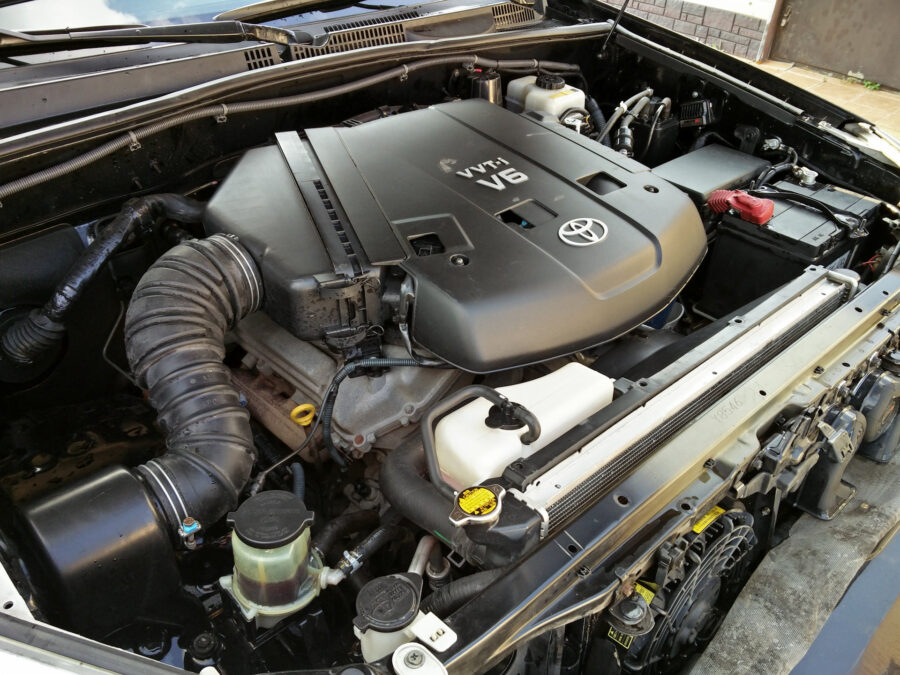
This engine was originally developed for trucks and SUVs, which means it’s not just capable — it’s overbuilt for many drivers’ needs. It uses a timing chain instead of a belt, eliminating a common maintenance concern. Drivers often report reaching well beyond 250,000 to 300,000 miles with only routine maintenance.
Its faults are minimal, though high-mileage versions may see issues like water pump wear or minor valve cover gasket leaks. Some very early versions had head gasket seepage over time, but Toyota improved the design. Overall, it’s a textbook example of an engine built to last.
Toyota/Lexus 3.5L V6 (2GR-FKS)
This engine is one of the most widely used in Toyota and Lexus vehicles, found in everything from the Highlander and Sienna to the Lexus RX and ES. The 2GR-FKS is part of Toyota’s GR engine family and an evolution of the earlier 2GR-FE. It features both direct and port fuel injection (D-4S system), which helps it avoid carbon buildup issues seen in some other direct-injection engines.
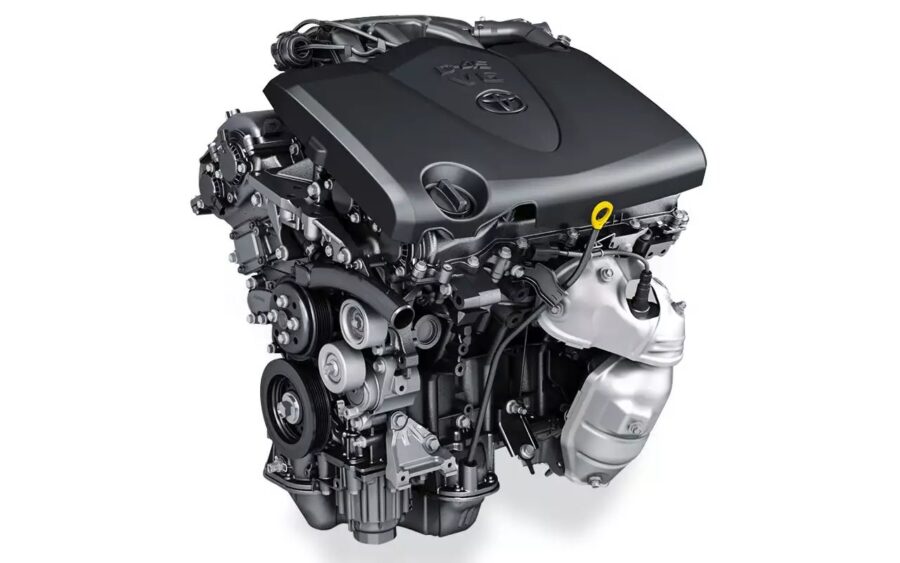
First launched in the mid-2010s, the 2GR-FKS is known for its buttery smoothness, solid low-end torque, and longevity. It delivers a strong blend of performance and efficiency while staying remarkably dependable. Its timing chain and simple design help keep long-term maintenance manageable.
The engine has very few common faults. Some earlier versions saw minor oil leaks at higher mileage, and like most modern V6s, spark plug and ignition coil replacements can be more involved than on simpler engines. However, there are virtually no major design flaws or chronic issues reported.
Honda 2.4L I4 (K24 Series)
Honda’s K-series engines have earned a legendary status, and the 2.4L K24 found in older CR-Vs and Accords is a standout. It features an aluminum block and head, with a timing chain and a strong reputation for reliability. Introduced in the early 2000s, this engine was used in various forms across Honda’s lineup and is beloved by enthusiasts and casual drivers alike.
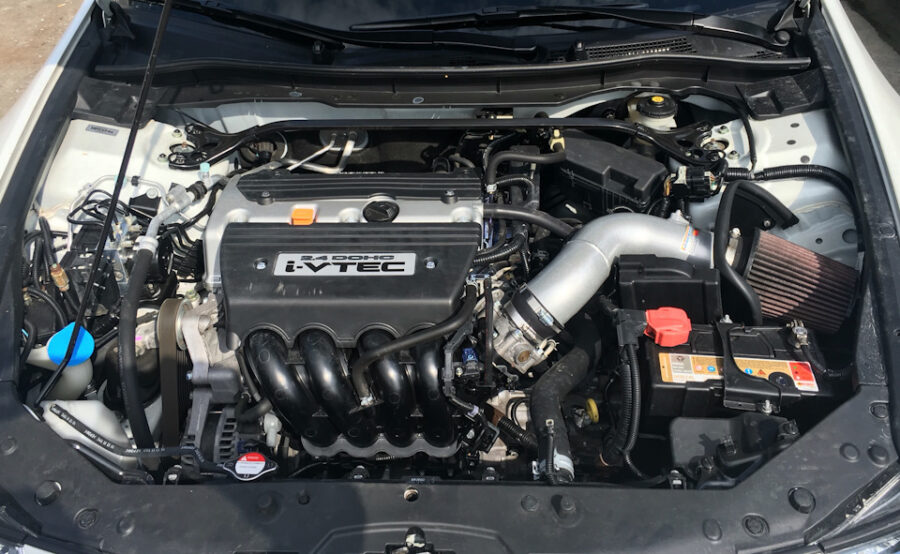
The K24 engine is known to easily exceed 250,000 miles with minimal issues. It’s not uncommon to see them run well past that with only basic care. Its design is simple, efficient, and durable.
The only recurring issue in earlier versions is the VTEC solenoid gasket, which may leak oil over time. Some models may also burn a bit of oil as they age, especially if oil changes are neglected. Otherwise, it’s one of the most bulletproof 4-cylinder engines ever made.
Honda 1.5L Turbo I4 (L15B7)
In newer Honda CR-Vs (2017 onward), Honda replaced the K24 with the L15B7 turbocharged engine. It delivers better fuel economy and more low-end power, but early versions (2017–2018) had a serious issue with gasoline diluting the engine oil, especially in cold climates. This “oil dilution” problem was due to short trips, turbo operation, and aggressive fuel injection strategies.
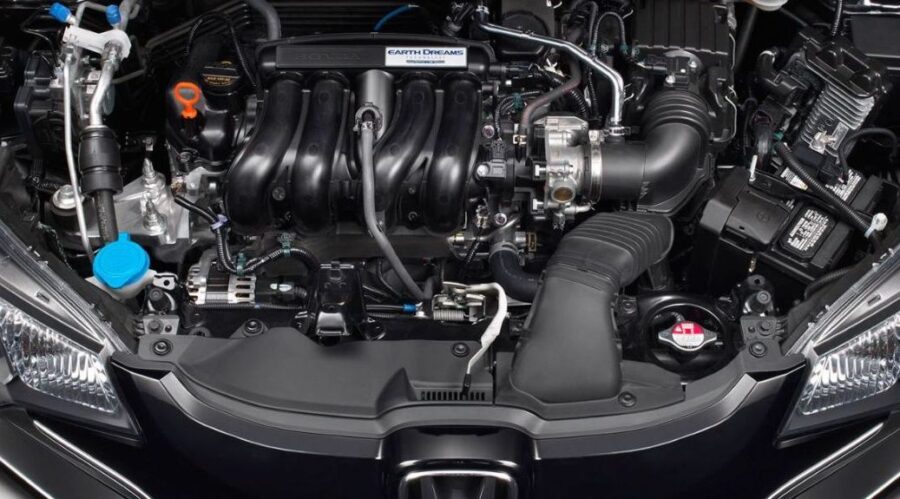
Honda released software updates and made hardware tweaks by 2019 to address the issue, and newer models seem to have far fewer complaints. Still, it’s not as proven long-term as the naturally aspirated K24. If you’re considering a CR-V, the 2015–2016 models with the 2.4L engine are generally the safest bet for reliability.
Mazda 2.5L I4 (Skyactiv-G)
Mazda’s 2.5L naturally aspirated Skyactiv engine has quietly built a reputation as one of the most dependable modern four-cylinder engines. Found in the Mazda CX-5, CX-9, and Mazda6, this engine is praised for its efficiency, simplicity, and long-term reliability.
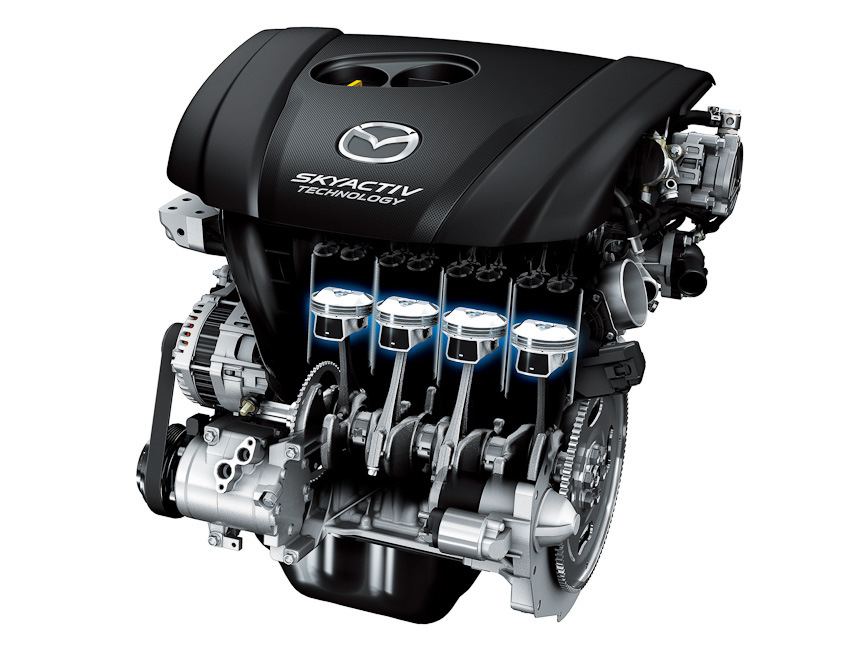
It avoids the complications of turbos and direct injection-only systems by incorporating smart design with high compression ratios and dual-injection systems (in later versions). The non-turbo version especially has proven extremely durable with low maintenance needs.
Common issues are very minor. Some models had carbon buildup over time in early direct injection-only versions, but the updated dual-injection system helped resolve this. In general, the 2.5L Skyactiv-G is a great example of “just enough” engineering — modern and efficient without over-complication.
Lexus/Toyota 4.6L V8 (1UR-FE)
The 1UR-FE is a 4.6-liter V8 that powers the Lexus GX 460 and some international variants of the Toyota Land Cruiser and Tundra. Part of Toyota’s UR family of engines, the 1UR-FE is a slightly scaled-down version of the more powerful 5.7L 3UR-FE used in the Sequoia and Land Cruiser. It was introduced in the late 2000s and was built with long-term durability in mind, favoring smooth, linear power delivery over cutting-edge performance.
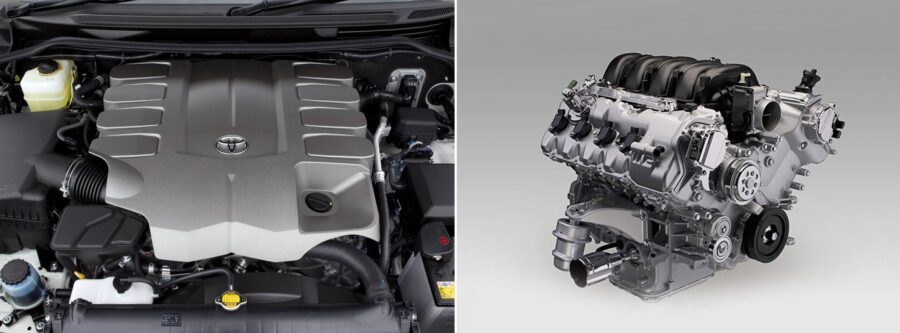
This engine uses a timing chain, forged steel crankshaft, and dual VVT-i (variable valve timing), giving it a blend of modern tech and old-school toughness. It runs quietly and efficiently for a V8, with very low NVH (noise, vibration, and harshness) — a hallmark of Lexus refinement.
Faults are extremely rare. The most common maintenance concerns are basic — spark plug and coil replacements at high mileage, potential oil seepage from the timing chain cover after 150k+ miles, and that’s about it. There are virtually no widespread mechanical failures reported. Owners of GX 460s commonly see over 300,000 miles without major issues.
GM 5.3L V8 (Vortec / EcoTec3)
The 5.3L V8 is General Motors’ bread-and-butter engine, found in millions of Chevrolet Tahoes, Suburbans, GMC Yukons, and trucks since the early 2000s. There are several generations of this engine — from the Vortec 5300 (Gen III/IV) to the EcoTec3 (Gen V, starting in 2014). Across all versions, the 5.3L has been known for its strong low-end torque, simplicity, and robust construction.
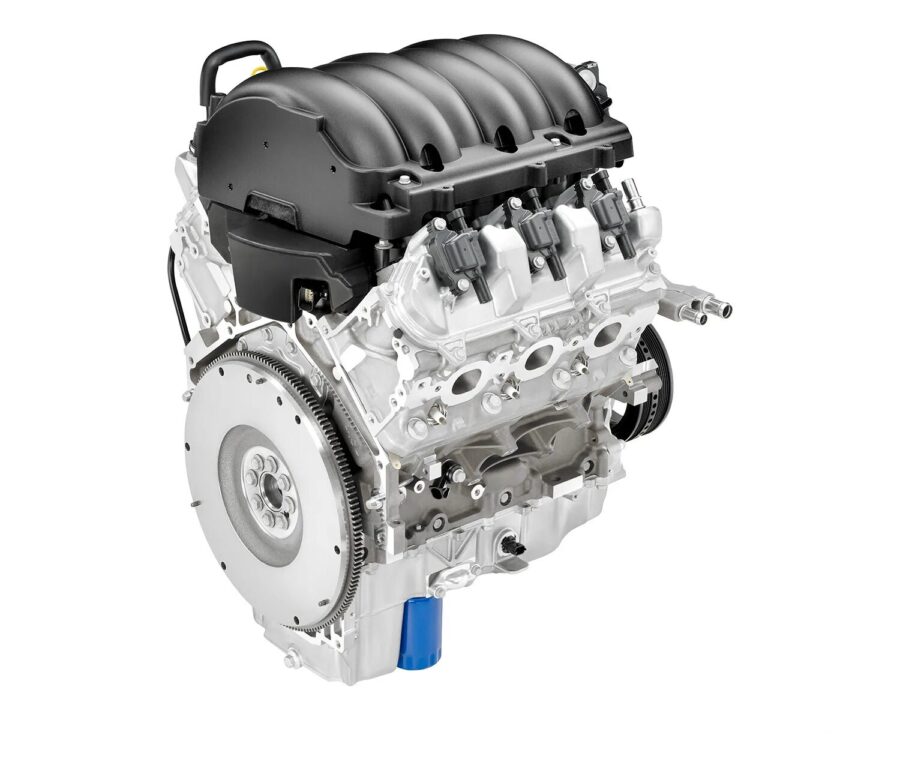
The older Vortec versions (like the L59 and LM7) were cast-iron blocks with aluminum heads, and they’re considered nearly indestructible if you keep up with oil changes and cooling system maintenance. Later EcoTec3 versions added technologies like direct injection and cylinder deactivation (Active Fuel Management or AFM), which boosted efficiency but introduced some problems.
AFM has been the Achilles’ heel of the newer 5.3L engines — causing oil consumption and lifter failure in some cases. However, many owners disable AFM or install updated components to eliminate the problem. Aside from that, the engine remains a favorite for high-mileage SUVs and trucks, regularly pushing past 250,000 miles.
Ford 5.0L V8 (Coyote Engine)
Originally introduced in the Mustang, the 5.0L “Coyote” V8 made its way into the Ford F-150 and some large SUVs, where it quickly became known for its power and reliability. This DOHC V8 features variable cam timing, a high-revving nature, and excellent durability — blending American muscle DNA with modern refinement.
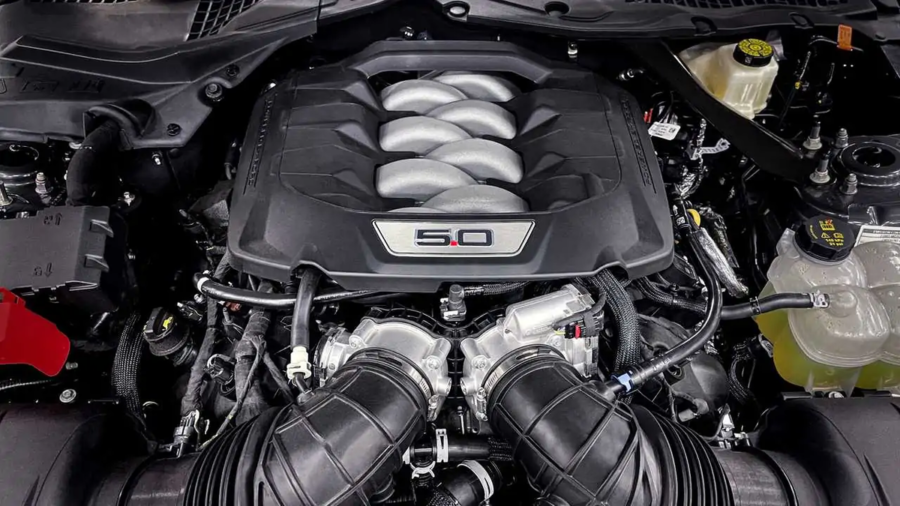
Compared to Ford’s more complex EcoBoost turbo engines, the 5.0L is simpler and often lasts longer with fewer issues. It doesn’t suffer from the turbo carbon buildup or intercooler condensation problems found in some 3.5L EcoBoosts.
Long-term concerns are few. Early versions had some minor oil consumption, especially around 2011–2013, but Ford improved piston ring design in later years. Timing chain wear can occur at high mileage, particularly if oil changes are neglected, but the engine overall is considered very solid. Many F-150s and Expeditions with this engine cross 200,000 miles with ease.
Toyota 5.7L V8 (3UR-FE)
Found in the Toyota Sequoia, Land Cruiser, and Tundra, the 3UR-FE is the definition of a “workhorse” engine. Introduced in 2007, this 5.7-liter naturally aspirated V8 puts out over 380 horsepower and was engineered with durability as a top priority — especially for towing and extreme conditions.
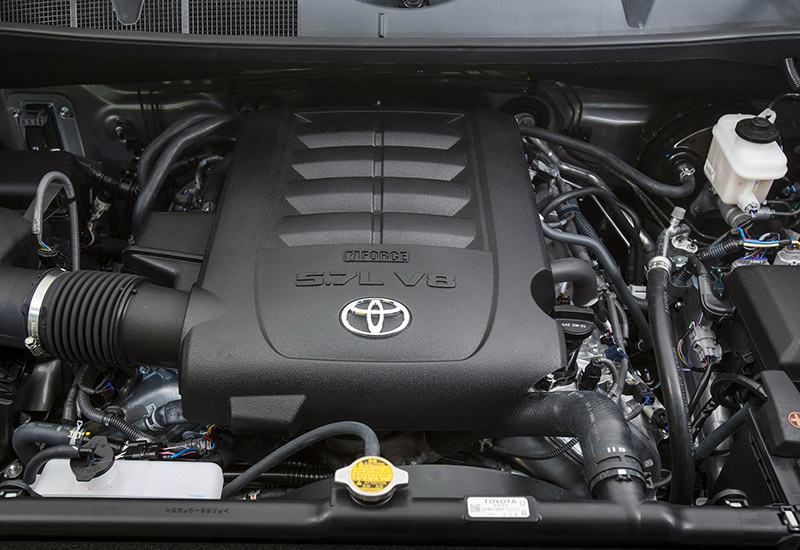
Built with a cast aluminum block and forged steel crank, it also uses a timing chain and VVT-i for solid efficiency. While it’s thirsty by modern standards, its reliability is practically unmatched in the full-size SUV and truck segment. These engines are common in fleets and high-mileage commercial use.
Common issues are incredibly rare. Some early models had air injection system failures (related to emissions), but mechanically the engine is a tank. It’s not uncommon for these to last 300k–400k miles with basic maintenance.
Mercedes-Benz 3.0L I6 & V6 Turbodiesels (OM606, OM642, OM656)
Mercedes has a long legacy of building bulletproof diesel engines, especially in the 1980s and 1990s. The legendary OM606 inline-6 diesel, found in older G-Wagens and E-Class models, is still revered for its mechanical simplicity and longevity — some calling it the million-mile motor.
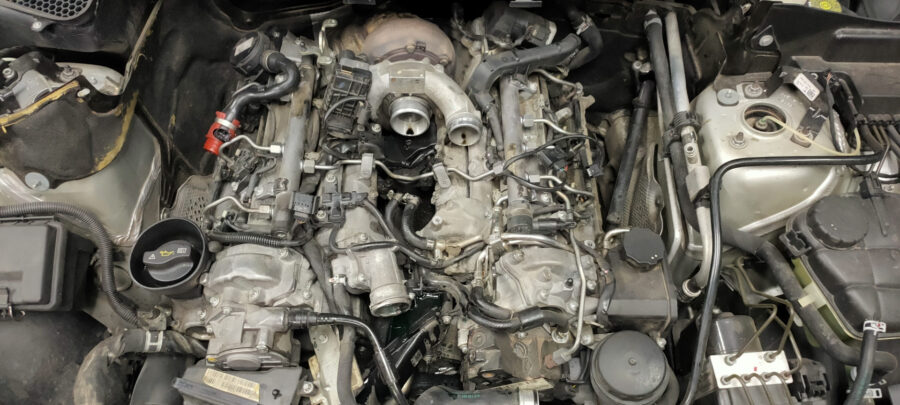
Fast-forward to the 2000s, and the OM642 3.0L V6 turbo diesel became the go-to diesel in models like the Mercedes ML, GL, and Sprinter vans. It’s smooth, quiet for a diesel, and capable of high mileage when maintained. That said, it’s sensitive to maintenance — especially oil quality and intake cleaning. Carbon buildup and swirl flap issues are the most common long-term headaches.
The modern OM656 (I6 turbo-diesel) is highly refined, but it’s still too new for long-term data — though early signs are positive.
BMW 3.0L I6 Turbodiesel (M57 / N57)
BMW’s inline-6 diesel engines — especially the M57 and N57 series — are regarded as some of the best diesels in performance SUVs like the X5 35d and 535d. These engines deliver excellent torque, efficiency, and impressive longevity with the right maintenance.
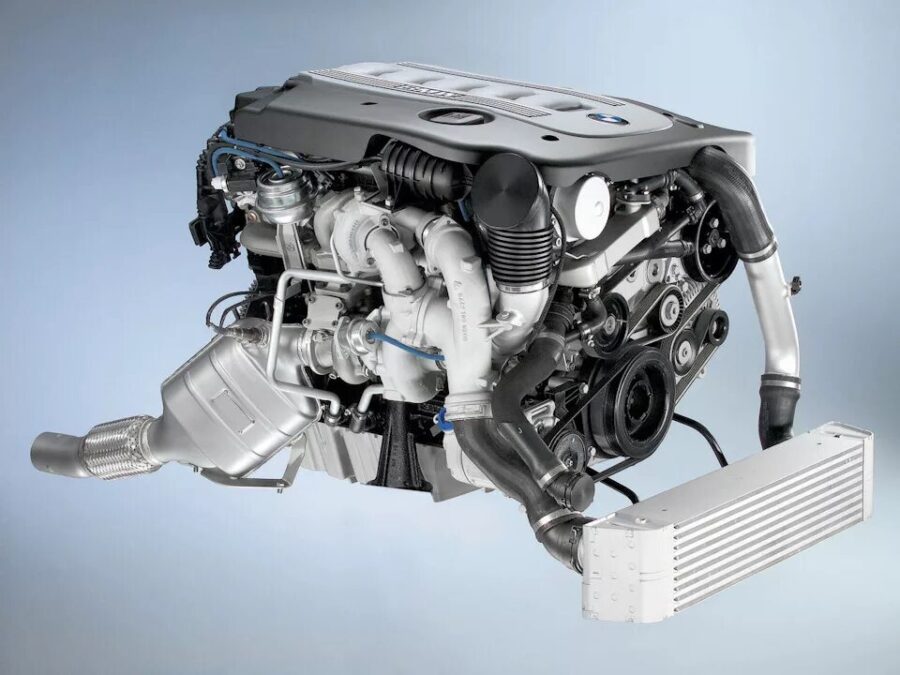
The M57 (used in early 2000s) is simpler and considered more durable, while the N57 (late 2000s–2010s) is more refined and powerful. Common issues include EGR valve clogging, carbon buildup in the intake manifold, and DPF (diesel particulate filter) regeneration problems — typical for modern diesels.
However, enthusiasts who maintain them carefully often hit 250,000+ miles with ease. In Europe, these engines are often still going strong in high-mileage tourers and SUVs.
Mazda 3.3L Inline-6 Turbo (e-Skyactiv G)
This is a newer entry on the scene, but already showing promising signs. Mazda’s new 3.3L inline-6 turbocharged engine powers the Mazda CX-90 and CX-70. It bucks the downsizing trend and instead offers smooth, linear power with fewer moving parts than a twin-turbo setup.
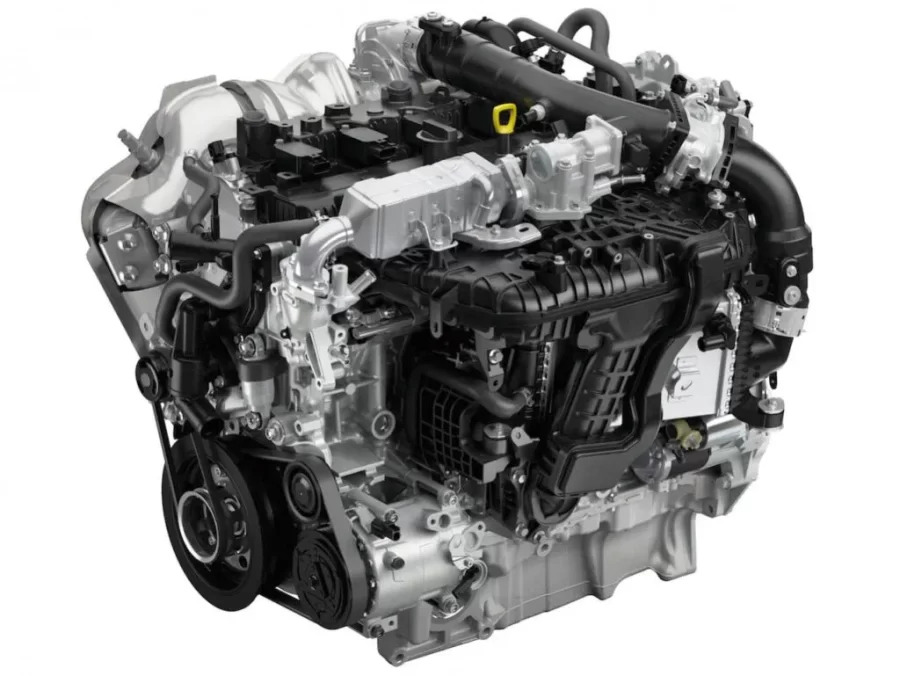
It also pairs with a mild hybrid system to boost efficiency and reduce strain on the engine under low-load conditions. Early owner feedback has been glowing, especially in terms of NVH and real-world fuel economy. Since it’s naturally balanced (inline-6 engines are inherently smooth), it should prove to be a long-term win if Mazda continues its history of building robust Skyactiv motors.
Still early days, but definitely one to watch for reliability.
Volvo 2.5L I5 Turbo (B5254T series)
Volvo’s quirky yet tough 5-cylinder engines, especially the 2.5L turbocharged B5254T used in the XC90 and XC70, have earned a solid following. Known for their unique sound and good torque delivery, they offered a good compromise between fuel economy and performance during the early 2000s.
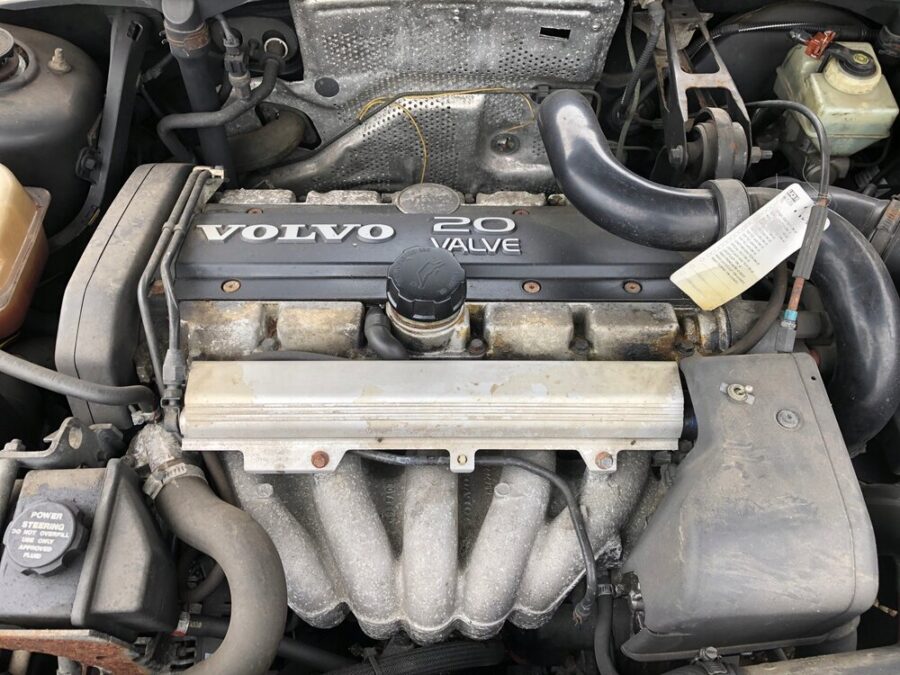
Mechanically, they’re quite stout — timing belt instead of chain, but not interference-prone. Most issues are related to the PCV system, vacuum leaks, or turbo seals. When those are kept in check, the engine can last well over 200,000 miles.
Later models did transition to more complex turbocharged 4-cylinders, which had teething issues — especially with oil consumption and valve carbon buildup.
Toyota 2.8L GD I4 Diesel (1GD-FTV)
This engine is not common in North America, but globally — especially in Asia, Africa, and Australia — the 1GD-FTV 2.8L turbo-diesel is a legend in vehicles like the Toyota Fortuner, Hilux, and Land Cruiser Prado.
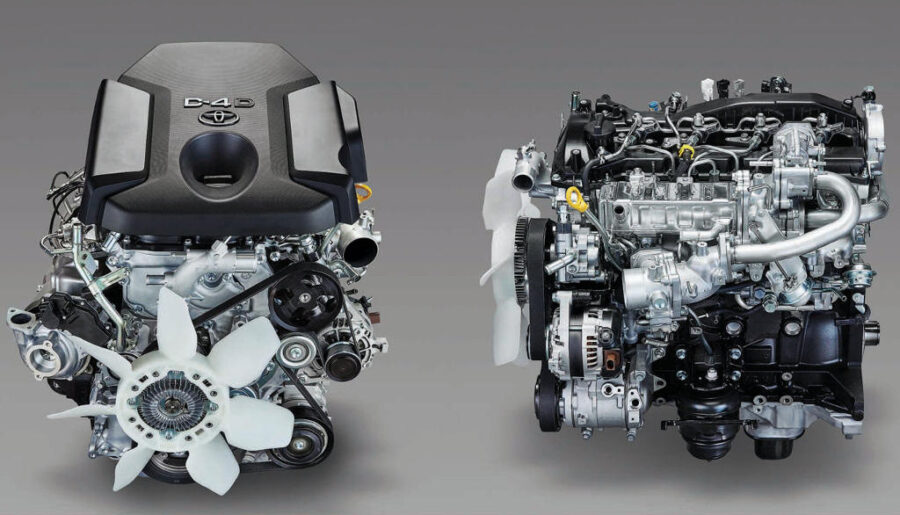
Built for abuse, the 1GD has a cast-iron block, strong internals, and a relatively simple turbo setup. It’s also designed to cope with poor-quality diesel fuel, high heat, and heavy loads — which makes it ideal for remote and rugged use.
Common issues? Mostly DPF-related if driven only in cities. Outside of that, these engines are known to exceed 500,000 km (310,000 miles) with minimal trouble. In markets where diesels still reign, this is the go-to for durability.
Comparison table
| Engine | Common Vehicles | Type | Strengths | Known Issues |
|---|---|---|---|---|
| Toyota 4.0L V6 (1GR-FE) | 4Runner, FJ Cruiser, Tacoma | NA V6, Chain | Extremely durable, off-road proven, simple design | Minor water pump leaks, valve cover gasket seepage |
| Toyota/Lexus 3.5L V6 (2GR-FKS) | Highlander, RX, Sienna | NA V6, Dual Injection | Smooth, efficient, low maintenance | Occasional oil leaks at high mileage |
| Honda 2.4L I4 (K24) | CR-V (2015–16), Accord, Element | NA I4, Chain | Legendary reliability, simple, long lifespan | VTEC gasket leaks, minor oil burning |
| Honda 1.5L Turbo I4 (L15B7) | CR-V (2017+), Civic | Turbo I4, Direct Injection | Fuel-efficient, peppy | Oil dilution (2017–18), resolved after 2019 |
| Mazda 2.5L I4 (Skyactiv-G) | CX-5, Mazda6 | NA I4, High Compression | Efficient, reliable, simple | Carbon buildup in older models |
| Lexus 4.6L V8 (1UR-FE) | GX 460, Toyota Land Cruiser Prado | NA V8, Chain | Luxury smoothness, extremely durable | Minor timing cover oil seepage |
| GM 5.3L V8 (Vortec / EcoTec3) | Tahoe, Suburban, Yukon | NA V8, Chain | Strong torque, high mileage capable | AFM-related oil consumption/lifter issues |
| Ford 5.0L V8 (Coyote) | F-150, Expedition | NA V8, DOHC | High revving, low failure rate | Early oil consumption, timing chain wear (high miles) |
| Toyota 5.7L V8 (3UR-FE) | Sequoia, Land Cruiser, Tundra | NA V8, Chain | Towing powerhouse, extreme durability | Air injection pump (emissions-related) |
| Mercedes 3.0L V6/I6 Diesel (OM642/OM656) | ML, GL, Sprinter, GLE | Turbo Diesel V6/I6 | Refined, great longevity, global support | Carbon buildup, swirl flap failure |
| BMW 3.0L I6 Diesel (M57/N57) | X5, 535d | Turbo Diesel I6 | Strong performance, reliable with maintenance | EGR issues, DPF/clogging, swirl flap risk |
| Mazda 3.3L I6 Turbo (e-Skyactiv G) | CX-90, CX-70 | Mild Hybrid Turbo I6 | Smooth, modern, promising reliability | Too new for full long-term data |
| Volvo 2.5L I5 Turbo (B5254T) | XC90, XC70 | Turbo I5, Belt | Unique sound, decent power, durable | PCV issues, turbo oil seals, vacuum leaks |
| Toyota 2.8L I4 Diesel (1GD-FTV) | Hilux, Fortuner, Prado | Turbo Diesel I4 | Simple, rugged, high-mileage proven | DPF clogging in urban use |
Sales
Toyota 4.0L V6 (1GR-FE)
Sales Impact:
The 1GR-FE is the heart of Toyota’s body-on-frame empire — the 4Runner, FJ Cruiser, and Tacoma.
- The Toyota 4Runner has enjoyed a cult-like following and, even in its aging 5th gen, has seen sales climb nearly every year for a decade, surpassing 140,000 units/year in the U.S. by 2021–2023.
- The FJ Cruiser, while discontinued in 2014 (in North America), sold over 200,000 units total in the U.S. and remains a resale king.
- This engine helped cement Toyota’s place in the off-road and mid-size truck market, where competitors like the Nissan Xterra and Pathfinder fell off.
Toyota/Lexus 3.5L V6 (2GR-FKS)
Sales Impact:
This V6 was the driving force behind Toyota’s unrelenting grip on the midsize crossover market.
- Highlander routinely sells over 200,000 units per year in the U.S., thanks in part to the smooth, dependable 2GR.
- Lexus RX has been the best-selling luxury SUV in America for years, with annual sales between 90,000–110,000 — most of them powered by a 2GR derivative.
- The Sienna, when still offered with this engine, was one of the top-selling minivans globally.
Honda K24 (2.4L I4)
Sales Impact:
The K24 was in everything — and everything sold well.
- Honda CR-V, with the K24 from 2002 to 2016, consistently ranked among the top 5 best-selling vehicles in America, often breaking 400,000 units/year.
- It also appeared in the Accord, Element, and Acura TSX, making it one of the most mass-produced engines of the 21st century.
- Its durability, efficiency, and tuning potential made it beloved by families, commuters, and car enthusiasts alike.
Honda 1.5L Turbo (L15B7)
Sales Impact:
Despite early oil dilution issues, the L15 powered a new wave of efficient Hondas:
- CR-V sales barely dipped during the 2017–2019 period (when oil dilution was publicized), still moving over 300,000+ units/year.
- The Civic, using a similar engine, continued to dominate compact car sales. This engine proved that small turbocharged units could maintain volume, though trust in the K24 remains higher.
Mazda 2.5L I4 Skyactiv-G
Sales Impact:
Mazda’s 2.5L helped the brand gain respect as a premium-yet-accessible alternative.
- The CX-5, equipped with this engine, is Mazda’s best-selling model worldwide, selling over 150,000 units/year in the U.S.
- Mazda’s North American presence was almost entirely propped up by the CX-5 + 2.5L combo for most of the 2010s. Skyactiv efficiency let Mazda offer fun, reliable cars without going turbo or hybrid — a win for enthusiasts and real-world buyers.
Toyota 5.7L V8 (3UR-FE)
Sales Impact:
While not a volume monster in terms of vehicle sales, the 3UR-FE was a towing and durability legend.
- Powered the Toyota Tundra, which averaged 100,000–120,000 units/year in the U.S.
- Also used in the Sequoia, Land Cruiser, and Lexus LX 570 — all low-volume, high-margin vehicles. Buyers who wanted V8 muscle with Toyota reliability kept these models alive far longer than expected. It also made Tundras a favorite for commercial fleets that wanted a “set it and forget it” truck.
Lexus 4.6L V8 (1UR-FE)
Sales Impact:
Found in the Lexus GX 460, a vehicle that defies logic — old platform, old engine, yet still sold:
- The GX consistently moved 25,000–35,000 units/year in the U.S., nearly unheard of for a luxury SUV on a decade-old frame.
- Its global cousin, the Land Cruiser Prado, sees major sales across Africa, Asia, and Australia — often chosen for military and expedition use due to the 1UR or diesel options. This engine didn’t dominate in numbers but was key in markets where trust > trends.
Ford 5.0L V8 (Coyote)
Sales Impact:
The Coyote is a volume beast when you consider its use across platforms.
- F-150, the best-selling vehicle in the U.S. for over 40 years, sold 700,000–900,000 units/year, with a solid chunk powered by the 5.0L.
- In the Mustang, the Coyote has powered its success since 2011, helping the Mustang remain the best-selling sports car in the world multiple years running.
Buyers consistently opt for the Coyote when they want long-term reliability over EcoBoost complexity.
GM 5.3L V8 (Vortec/EcoTec3)
Sales Impact:
The backbone of GM’s full-size truck and SUV empire.
- Powered Silverado, Sierra, Tahoe, Suburban, and Yukon, many of which sell 200,000–400,000+ units/year each.
- Over the last 20 years, millions of 5.3L V8s have been sold, making it one of the most mass-produced V8s in automotive history. While not flawless, its ubiquity made parts, service, and confidence easily accessible — key to GM’s long-standing dominance in the U.S. truck market.
Mercedes OM642 3.0L Diesel
Sales Impact:
This engine powered:
- ML350 Bluetec, GL/GLS, Sprinter vans, and more.
- In North America, Bluetec SUVs averaged 20,000–30,000 units/year during their heyday (2009–2015).
- Globally, Sprinter vans sold hundreds of thousands annually, with OM642 diesels in many of them.
It was a commercial workhorse and a luxury hauler, popular in both U.S. and EU markets before diesel scrutiny surged.
BMW M57 / N57 Diesels
Sales Impact:
In the U.S., diesel BMW sales were niche — but very loyal.
The X5 35d and 535d sold in modest numbers (15,000–30,000 annually combined), but held resale value well thanks to the M57/N57 engines.
In Europe, however, these engines powered millions of BMWs across 3, 5, and X series vehicles, often as company cars or autobahn cruisers. They’re a key reason BMW held top diesel market share in Germany and the UK during the 2000s and 2010s.
Toyota 2.8L Diesel (1GD-FTV)
Sales Impact:
This engine is a global juggernaut.
- Found in the Hilux, Fortuner, Land Cruiser Prado, and Hiace vans.
- These vehicles dominate markets in Australia, Africa, South America, and Southeast Asia — where Toyota regularly claims 30–40% market share. The 1GD powers some of the most trusted vehicles on earth in environments where reliability is literally life-and-death.
Mazda 3.3L Turbo I6 (e-Skyactiv G)
Sales Impact (Early):
Still very new, but initial sales of the CX-90 have been strong for Mazda’s segment:
- Monthly U.S. sales are averaging 3,500–5,000 units, a strong start in the competitive 3-row SUV space.
- Early reviews and smooth engine performance are expected to boost Mazda’s brand positioning as a near-luxury player.
We’ll see its long-term impact by 2026–2027, but early signs are good.
Volvo 2.5L I5 Turbo (B5254T)
Sales Impact:
This engine helped Volvo during its transitional years:
- XC90, V70, and S60 with the I5 turbo sold well during the 2000s, often exceeding 80,000–100,000 units/year globally.
- The I5 made Volvos quirky but dependable, key to Volvo’s reputation before the Geely buyout and the move to 2.0L Drive-E engines.
Awards
Toyota 4.0L V6 (1GR-FE) Awards & Recognition
This engine didn’t rack up many trophies, but it earned legendary status in real-world use. Known more for ruggedness than innovation, the 1GR-FE has been heavily praised by off-road publications and overlanding communities. It contributed to the Toyota 4Runner consistently ranking high in J.D. Power Vehicle Dependability Studies and Consumer Reports Reliability Rankings year after year.
Toyota/Lexus 3.5L V6 (2GR-FKS) Awards & Recognition
The 2GR series is highly acclaimed, and in its various forms (2GR-FE, -FSE, -FKS), it has appeared in Wards 10 Best Engines lists in the past. It has also contributed to multiple Toyota and Lexus vehicles winning long-term reliability awards from Consumer Reports, J.D. Power, and U.S. News & World Report. It’s often cited as a benchmark for naturally aspirated V6 refinement.
Honda 2.4L I4 (K24) Awards & Recognition
The K24 has earned its place in automotive lore. While it didn’t win many formal industry awards, it was the backbone of numerous Car and Driver 10Best winners and is frequently cited by engineers and tuners as one of the best four-cylinder engines ever made. Its reliability contributed to the Honda CR-V and Accord topping resale value charts and J.D. Power dependability ratings.
Mazda 2.5L I4 (Skyactiv-G) Awards & Recognition
Mazda’s Skyactiv engines were lauded for their bold move away from downsizing and turbocharging. The original Skyactiv-G 2.5L won Wards 10 Best Engines recognition for its innovative high-compression design and real-world efficiency. Mazda has also received engineering awards from SAE International for Skyactiv technology.
GM 5.3L V8 (Vortec / EcoTec3) Awards & Recognition
While the 5.3L didn’t often appear in performance award lists, it contributed to vehicles like the Chevy Silverado and Tahoe receiving multiple J.D. Power Initial Quality Awards. The EcoTec3 updates brought cylinder deactivation and improved emissions — and while controversial due to AFM issues, it was still seen as a benchmark for American V8 utility.
Toyota 5.7L V8 (3UR-FE) Awards & Recognition
This engine is beloved by the towing and off-road crowd and helped the Toyota Tundra win Truck of the Year (Motor Trend, 2008) and several top spots in long-term durability rankings. It was never flashy enough for innovation awards but has earned high marks in consumer satisfaction, fleet durability testing, and resale studies.
Lexus 4.6L V8 (1UR-FE) Awards & Recognition
While overshadowed by the larger 5.7L sibling, the 1UR-FE has contributed to the Lexus GX 460’s consistent placement in J.D. Power Dependability rankings. Lexus’ reputation for bulletproof drivetrains owes much to the quiet strength of this engine, even if it didn’t win many trophies.
Ford 5.0L V8 (Coyote) Awards & Recognition
This engine has been widely celebrated. It has earned multiple spots on the Wards 10 Best Engines list (notably for the Mustang GT version), and is recognized as one of Ford’s most durable modern engines. Its use in the F-150 contributes to that truck’s dominance in sales and resale value. Enthusiasts and performance publications love it for its naturally aspirated character in a turbo-heavy world.
Mercedes-Benz 3.0L V6 Diesel (OM642) Awards & Recognition
The OM642 hasn’t won many flashy awards, but it’s received internal accolades from fleet operators and commercial reviewers. It powered award-winning Sprinter vans and luxury SUVs praised for their fuel economy and torque. German engineering publications praised its refinement, especially in early Bluetec applications.
BMW 3.0L I6 Diesel (M57 / N57) Awards & Recognition
BMW’s diesels received Wards 10 Best Engines recognition, especially the N57 used in the 535d and X5 xDrive35d. These engines were noted for delivering diesel torque with surprisingly sporty manners. In Europe, the M57 and N57 helped BMW win multiple engine efficiency and innovation awards from UK and German automotive press.
Toyota 2.8L Turbo Diesel (1GD-FTV) Awards & Recognition
This engine is not common in the U.S., but globally, it’s a champion. It’s powered multiple World Pickup of the Year winners (Hilux), and in Australia, vehicles with the 1GD regularly win 4×4 of the Year and Best Engineered Workhorse accolades. Toyota has also received praise from military and NGO procurement branches for the 1GD’s field reliability.
Mazda 3.3L I6 Turbo (e-Skyactiv G) Awards & Recognition
As a newcomer, this engine has already gained Wards 10 Best Engines status in 2023 for its smooth power delivery, high real-world MPG, and clever 48V mild hybrid integration. Reviewers consistently highlight its luxury-grade refinement, and it’s helped the CX-90 break into premium territory.
Volvo 2.5L I5 Turbo (B5254T) Awards & Recognition
This engine never won major North American awards, but it was praised in the early 2000s for being punchy, unique-sounding, and robust. Publications like Top Gear and Auto Express praised the I5 architecture for being a “thinking man’s turbo” — smoother than a four, simpler than a six. Its longevity is what kept it in production across multiple generations.
